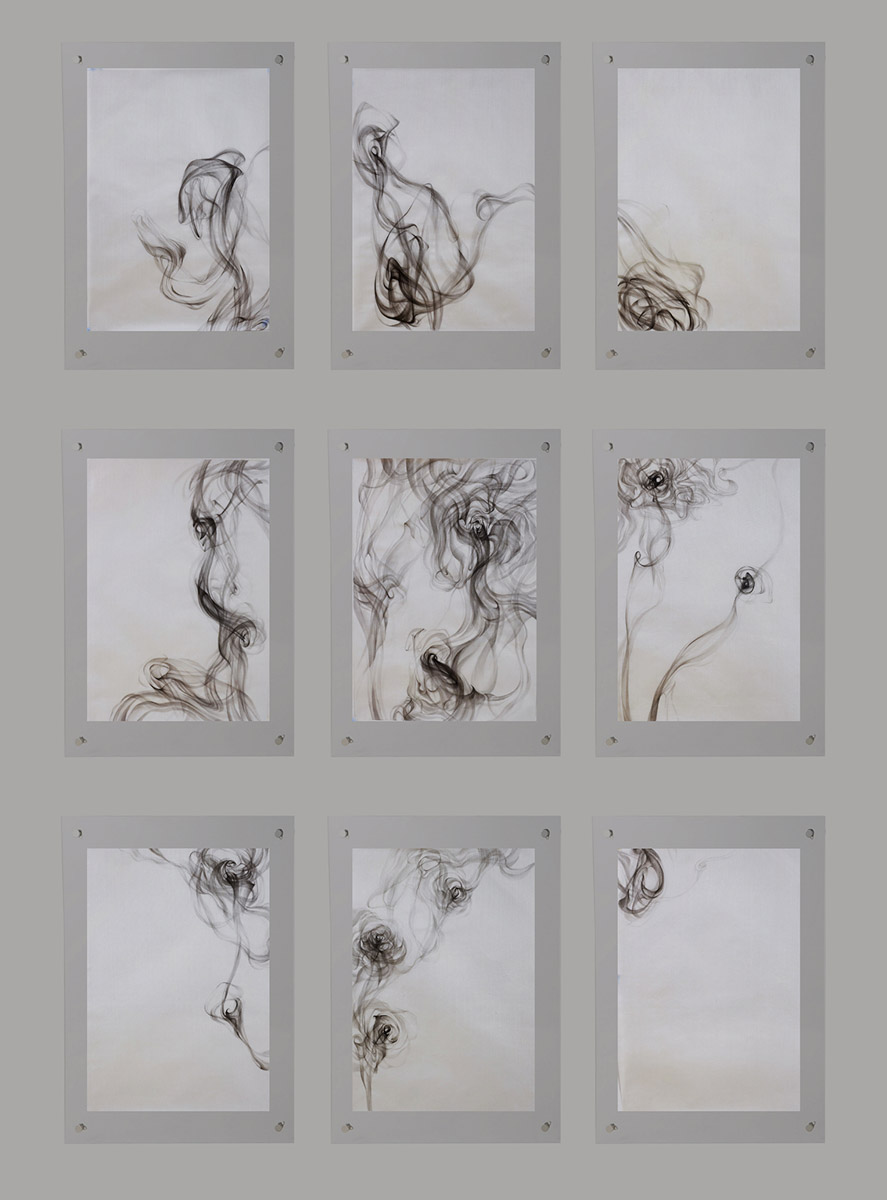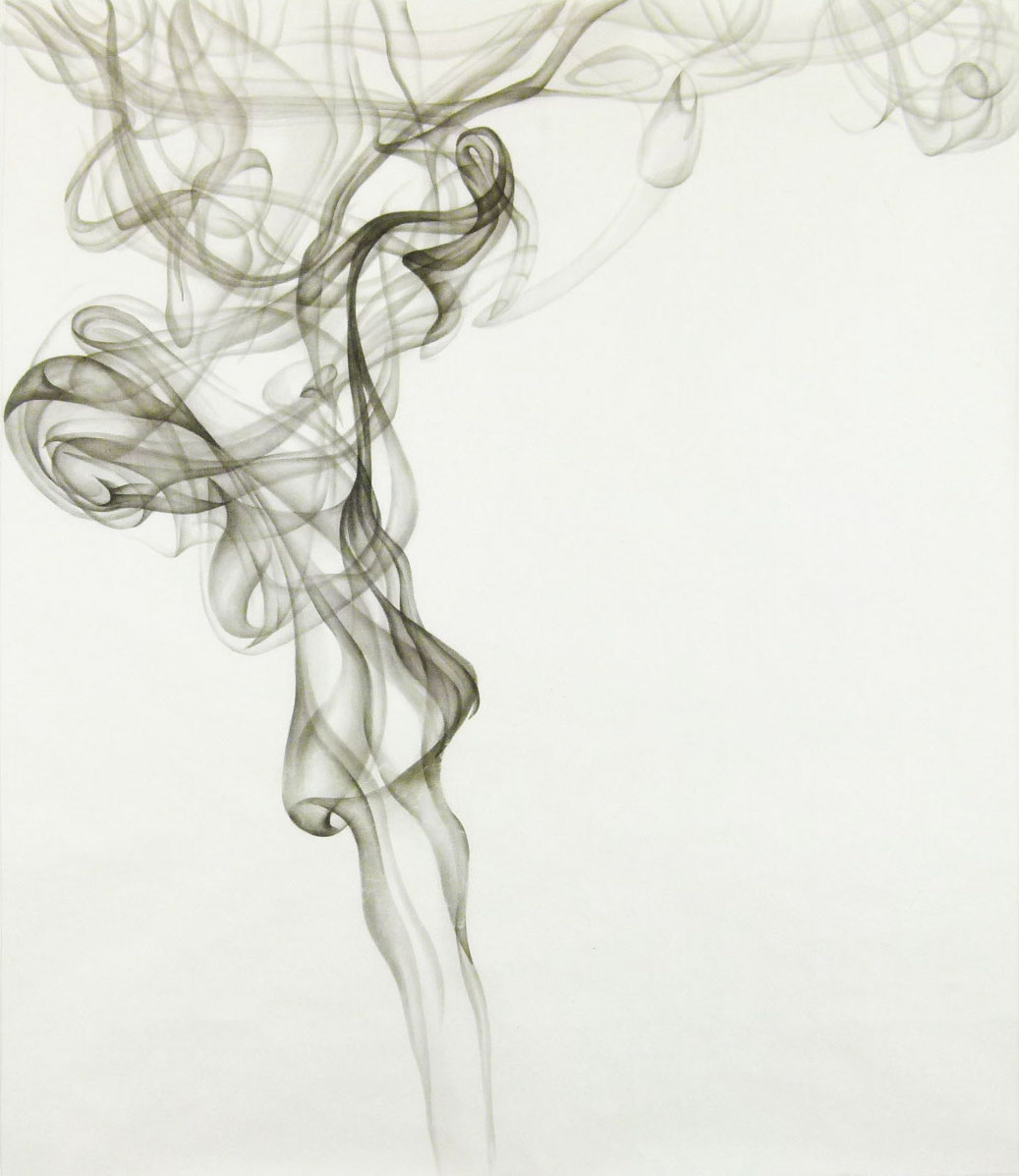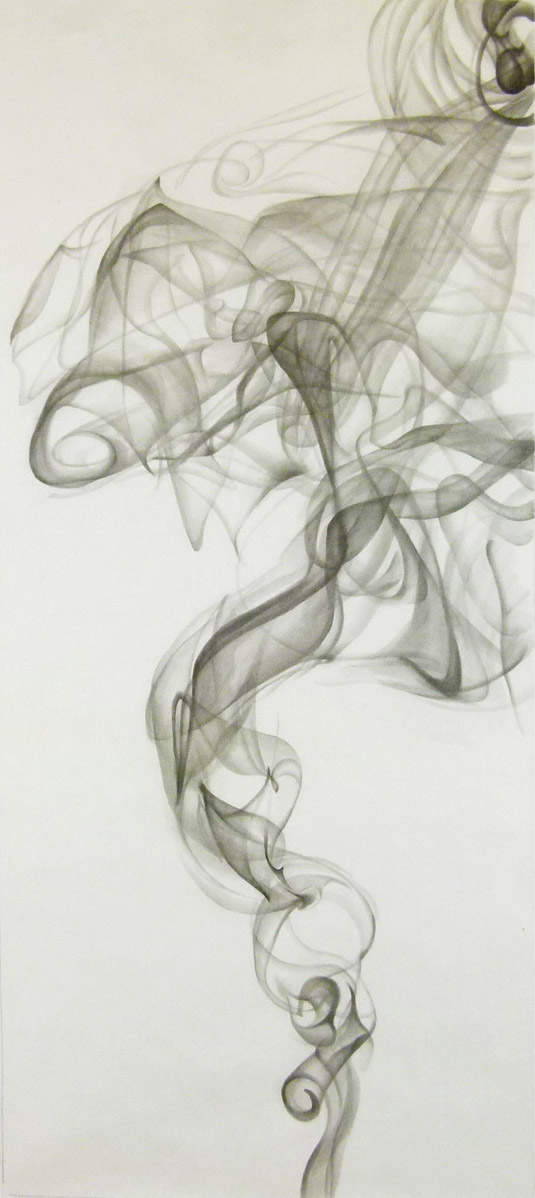
Destiny
Shoran Jiang
Ink on silk
90 x 110 cm
2019
(London)
There are so many uncertainties about our lives as human beings – we are vulnerable, just like the unpredictable form of smoke.
Shoran Jiang is an artist specialized in Chinese painting and Chinese Calligraphy. She began to learn Chinese painting and Chinese Calligraphy when very young. After studied Chinese painting for six years in Nankai University, then she came to the UK to study fine art in Chelsea College of Design and Art. Now she also devotes her time to art education and art publication.
Interview of Shoran Jiang
When you created Destiny, what do you personally make of borders in our civilisations such as class, race, gender, belief, nation?
Borders appear in many places, and because of them, there are nations and people, especially various individuals. Every individual is different, and due to the variety and dynamism of the individual, this world has become so interesting.
However, as human beings, apart from those borders, we share the same nature or property, for example, no one can escape “Destiny”.
Do you think there are new possibilities in abstract art and ink painting, and what is the particular area that you try to breakthrough?
Ink is only a medium of creativity, and abstract art is a way of expression. To be honest, many forerunners had explored so many possibilities, so that if there is any particular area to work on, I think it is to relate art with the “present”, expressing the “current” feelings.
Under the shadow of the Covid-19 pandemic, the world is reshaping, in this case, can you talk about how is the artwork made before the pandemic related to the Post-COVID Era?
Before the pandemic, the world was shaped mainly through connection, however, due to the rapid spread of COVID, we are forced to obey social distancing rules. I was surprised to witness that in my life, within a deeply globalised milieu, the disconnection of borders of countries is happening. Isn’t this what Laozi said: “And even though the next country is so close that people can hear its roosters crowing and its dogs barking, they are content to die of old age without ever having gone to see it”?
After the spread of the pandemic, a lot of places have decreed lockdown and many galleries and museums have been forced to suspend operating. Thereafter, people are not able to appreciate and enjoy art at an intimate distance. Exhibitions are converted to the online format. How to present art and express ideas and emotions has turned out to be urgent and practical matter in making art.
Regardless of the Pre or Post COVID era, art-making has always been expressed from the inside to the outside for artists. The pandemic has made me feel more deeply that when humans confronting destiny, how fragile and uncertain life is.
As a UK based Chinese, do you thin your identity is somehow related to the ecology of art?
The materials that I use are very Chinese, for instance, ink, brush and silk, and I feel they are part of my identity. I was born and raised in China and formed my way of thinking by Chinese education, it is also part of my identity. The longer that I live in the UK, the more I love Chinese culture, which defines who I am.
Contemporary art is about expression, about how to express, through what and with what content to express. The materials that I use is my identity, nevertheless, no matter what materials I use, as long as the artwork contains good ideas, and can convey the message with which the audience can more or less feel and understand, that is good enough.
How has the pandemic influenced you, and what do you make of the ideal future art-making and exhibitions?
The most inconvenient part is the physical relocation–we cannot return to China, and practically cannot go to any other place. I have profoundly realised the hopelessness and fragility of human beings.
Of course, it also enables me to think about alternative ways to present my art.
I think in the future, the online and offline exhibitions will occur simultaneously, and they will supplement each other, perhaps, the online exhibition will become an independent way of exhibiting. Due to the changes in exhibition methods, art-making will adapt accordingly. There will be artists who would like to explore how to suitably express and present art exclusively online.
专访姜啸然
请问在创作“命运“系列的时候,你对世界上各种边界,比如阶级、种族、性别、信仰、民族等有没有什么个人的看法?
边界存在于所有地方,因为边界才有国家,也因为人的边界,才有不同的个体。每个个体都是不同的,正是因为不同,世界才有趣。
但是作为“人”,在这种边界之外,大家又是相同的,比如所有人都逃离不了“命运”。
你认为抽象艺术和水墨画发展到了当代还有哪些新的可能性,你的创作突破口在哪里?
水墨只是一种创作的媒介,抽象是一种表达方法,说实话,前人的探索已经很多了。所以,如果说,在当下有什么可以突破的,那就是结合“当下”的事,表达“当下”的感受。
受新冠疫情影响,世界格局在发生变化,是否可以谈一下你觉得这一在新冠疫情之前就开始的创作和后新冠时代是否有相互借鉴的地方?
以前的世界是以联系connection为主的,但是现在,因为新冠这个突发事件,大家被迫切断联系。我很惊讶在我的有生之年,在全球化这个大背景下,还能发生这种各国被迫切断联系的事件。这不就是老子说的“邻国相望,鸡犬之声相闻,老死不相往来”的样子吗?
新冠之后,很多地方都“封城”或者下达了“禁足令”,许多画廊、美术馆也被迫停业。这样之前可以近距离欣赏艺术的人们无法在现场观看到艺术品,许多展览也被迫改成线上展。如何在虚拟的空间和世界里,传达作品里需要表达的感受和想法就成为了创作时需要思考的实际问题了。
不过,不论是新冠疫情之前还是后新冠时代,艺术创作都是艺术家由外而内的感受。新冠疫情让我更加体会到,人类在面对自己命运的时候,生命是何等脆弱,人生又是多么无常。
作为在英国的华人,你认为当代艺术生态和你的身份认同之间是否有某些联系?
我用的材质是很中国的,比如墨、毛笔、绢,我觉得这就是我的identity;从小在中国受到的教育、形成思维方式,这也是我的identity。在英国生活的时间越久,就越喜爱中国的文化,which定义了我是谁。
当代艺术在于表达,用什么方式表达、表达了什么内容,我用的材质是我的identity,但是不论我用什么样材质,只要作品的想法可以表达好、传递出去,观众在看的时候能或多或少有些理解,甚至能有感悟,这就很好了。
新冠时代对你的影响主要有哪些,你认为艺术创作和展览在未来理想的状态应该是什么样的?
最大的影响应该是物理位移的难度——想回国回不去,想去别的地方也不现实。这也我深刻体会到人的脆弱与无助。
当然,在艺术上新冠时代让我思考自己作品的呈现方式。
我觉得未来应该是线上展和线下展会同时发生,二者互为补充,甚至线上展会独立出来,成为一种新的展览形式。因为这种展览方式的变化,会让一些艺术创作有所变化,有些艺术家会去探索适合线上展的表达方式与呈现方式。

